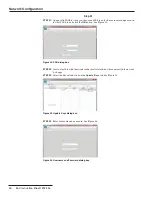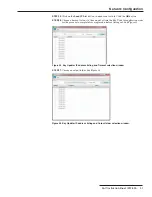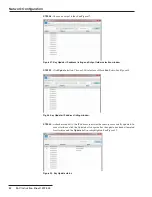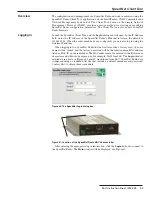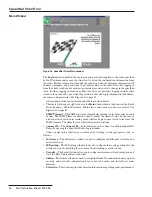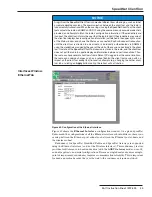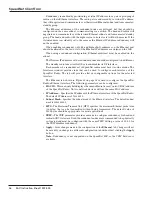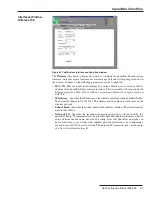
44 S&C Instruction Sheet 1072-530
SpeedNet Client Tool
IP Routing Window,
Ad Hoc Routing Tab
Figure 71. The Ad Hoc Routing IP configuration window.
The
IP Routing
window provides a list of tabs that can be used to confi gure the routing
performance of a SpeedNet Radio. Selecting a tab will provide a list of confi gurable options.
The
Ad Hoc Routing
tab, shown in Figure 71, is used to enable, disable, or configure
the embedded ad hoc (mesh) routing protocol. The embedded ad hoc routing protocol
is a customized version of Ad-hoc On-demand Distance Vector (AODV). The following
parameters can be configured:
• Off
—Selecting
Off
will disable the automated mesh networking protocol. When
disabled, static routes must be entered manually on the
Routes
tab for all endpoints
this radio needs to reach. No combination of automatic AODV routing and static
routing is supported
• AODV
—Selecting
AODV
will enable the embedded mesh networking protocol
allowing network routes to be created and maintained automatically to the best
next hop neighbor from the SpeedNet Radio. All radios in the network must enable
AODV to use the feature. Selecting
AODV
is recommended for ease of confi guration,
robustness to radios going down, and ease of adding radios to the mesh. The
remaining confi guration options on the
Ad Hoc Routing
tab pertain specifi cally to
the mesh networking protocol
• Active Route Timeout
—The
Active Route Timeout
parameter determines how
long a SpeedNet Radio should wait for an inactive data communication route to be
removed from the route table. Each time an IP packet is sent over a specifi c route, a
timer begins counting down. If the timer expires before another packet is sent, the route
is considered inactive and is removed from the radio’s route table. The
Active Rout
e
Timeout
value determines the length of this timer. In SCADA polling applications, a
timeout value greater than the polling interval is recommended. Note that a route is
defi ned by the IP address of the two endpoints. A given pair of SpeedNet Radios may
have several separate routes between them, for example serving different devices on
the radios’ Ethernet ports. As such, activity on one route between two radios does
not preserve other routes between the two radios for traffi c with different source/
destination IP addresses. The value of this parameter is measured in minutes and the
recommended value is 30 minutes

